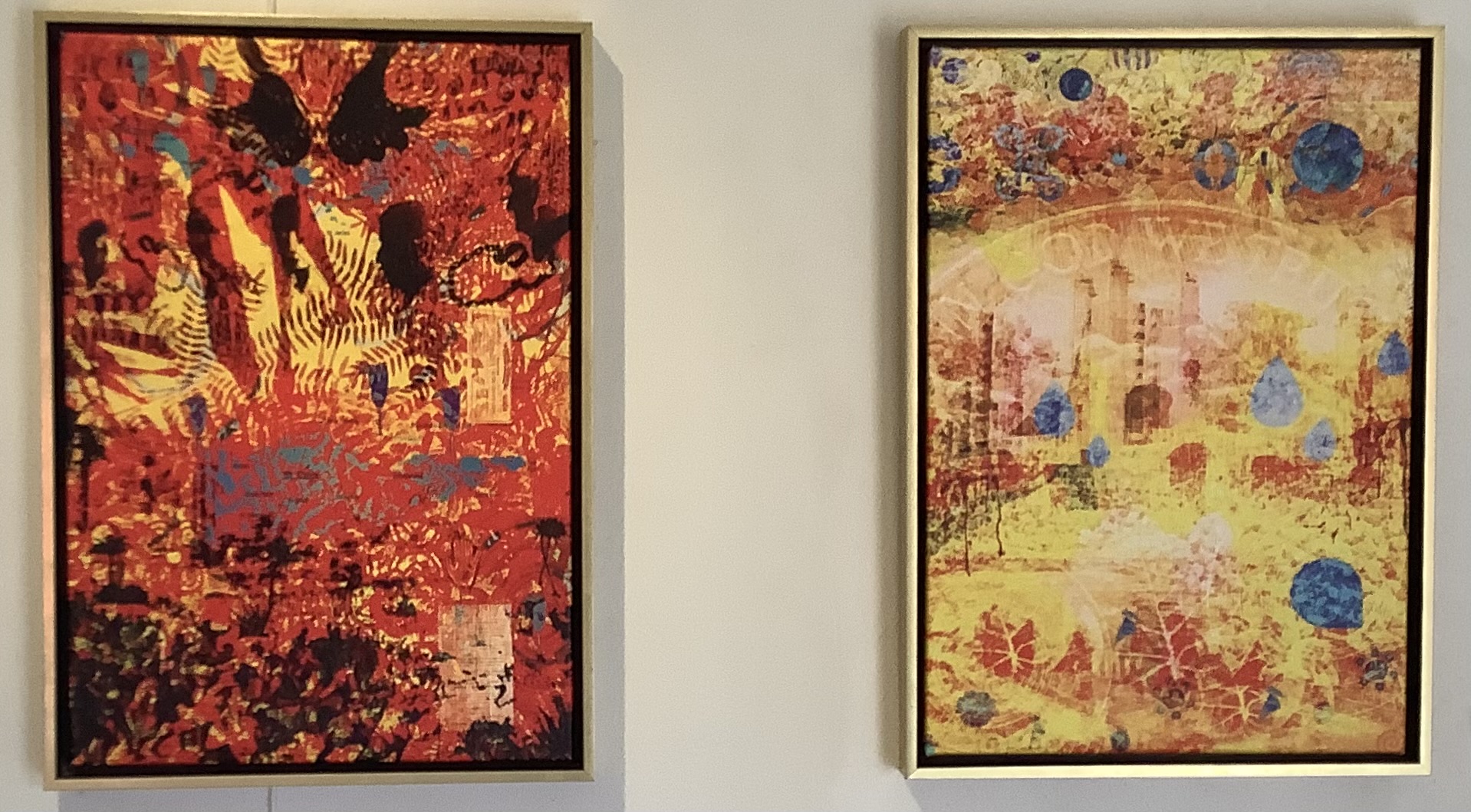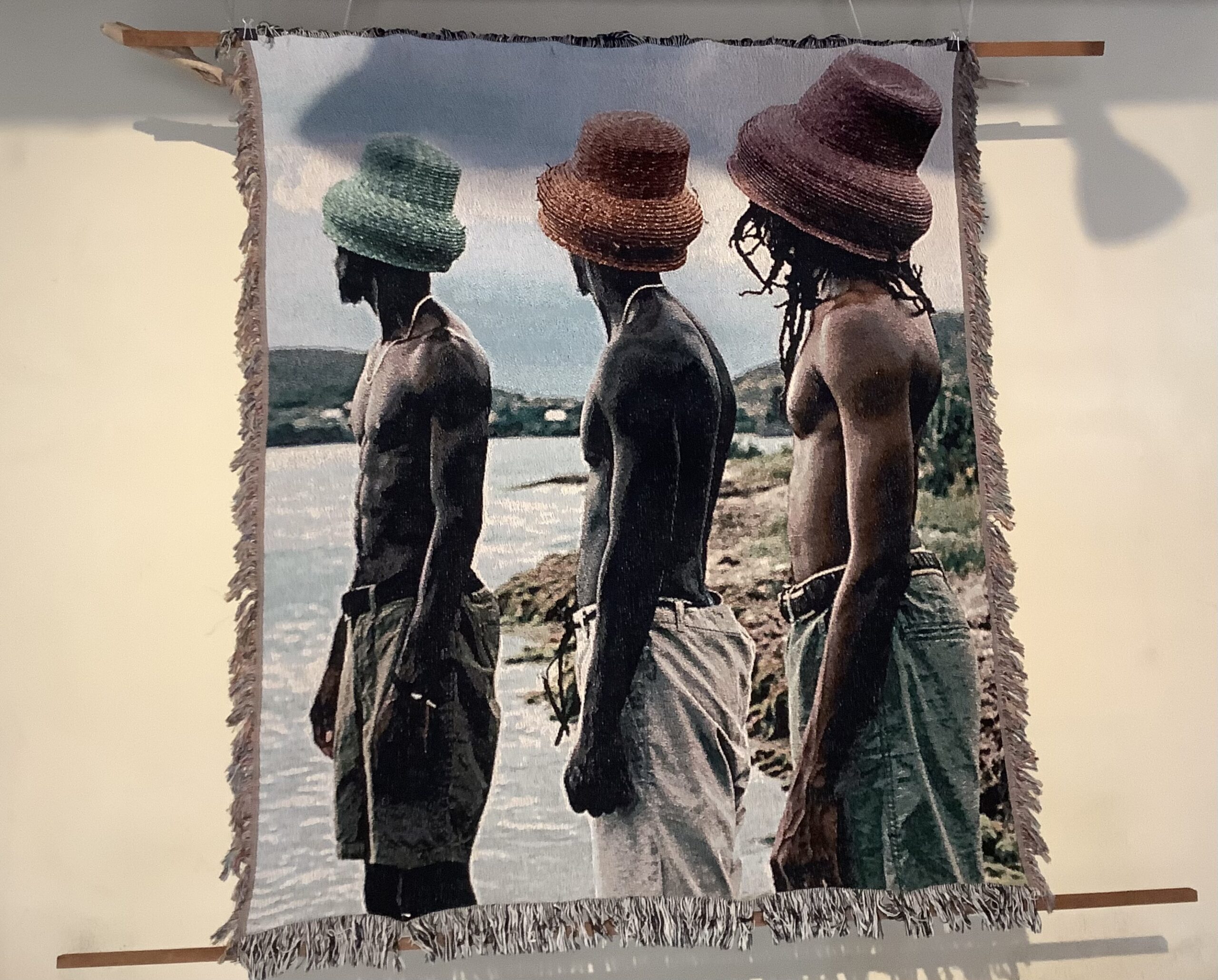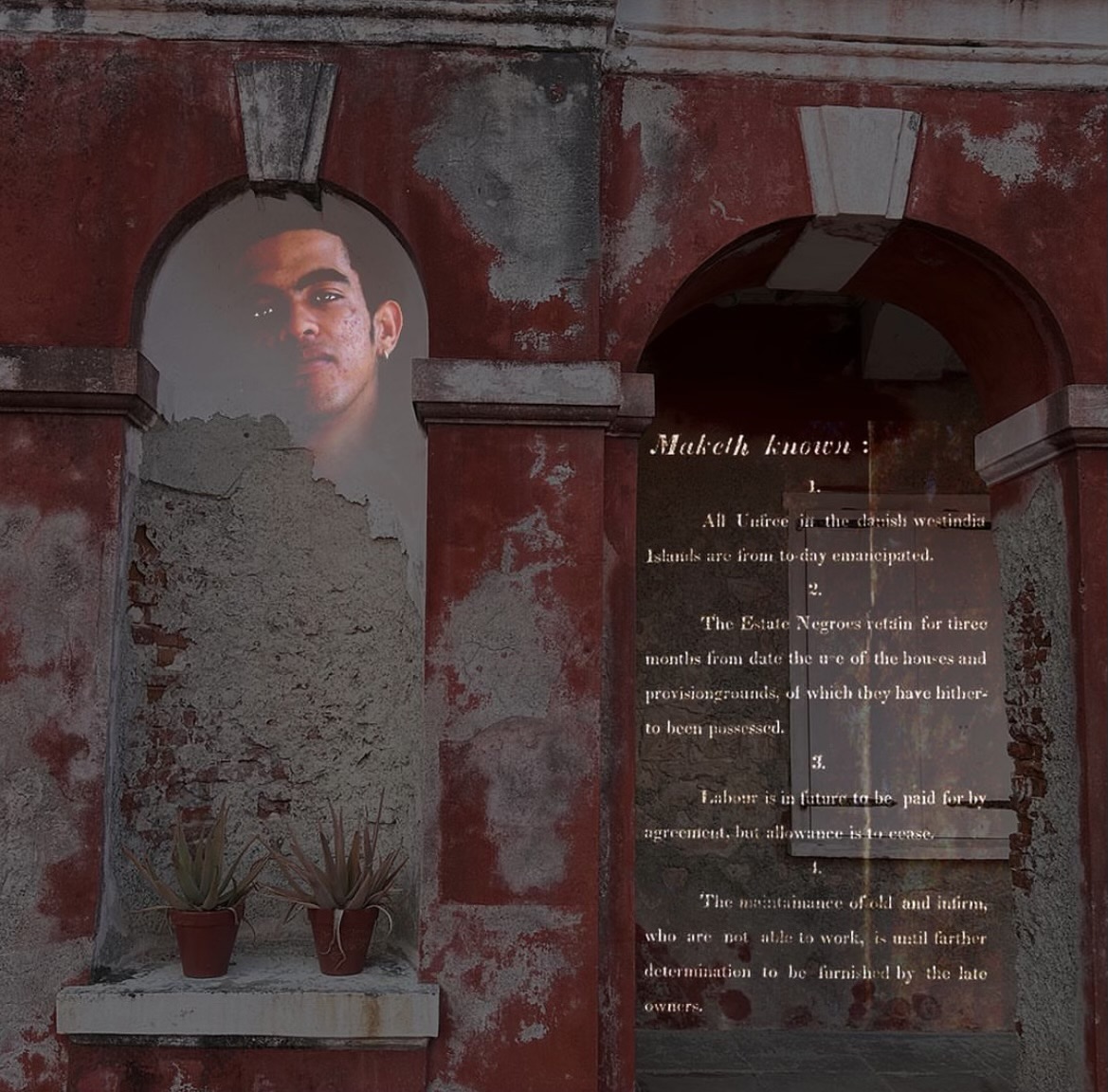“Clear de Road,” the Emancipation 175 Exhibit at the Fort Frederik Museum, part two of a three-part series, will again feature artists whose “decolonial work recenters the narrative to ensure it speaks from inside the Virgin Islands and for the Virgin Islands.”
The exhibit opened on July 3 and can be seen through Nov. 10, 9 a.m. to 4 p.m. The community is invited to come again and again with families, with friends, and with students so that these remembrances are ingrained in our collective memories for generations to come.
Part One in the series gave insight into the homage paid to the 175th anniversary of the Emancipation. It shed light on the partnership of the Department of Planning and Natural Resources and the 175th Emancipation Commemorative Committee, presented by the Division of Libraries, Archives, and Museums, sponsored by First Bank, with support by the Office of the Governor. Part Two and Part Three will do the same. In each series, the multiple genres of the artists are explored and their new works are revealed.
Chalana Brown shows up in a variety of artistic genres: she explores the realms of forgotten identities and emergent narratives artfully captured through her masterful camera lens, rethinks fashion and ethnic attire as she boldly dons madras, and reveals the forgotten stories of her ancestors as a tapestry of imagery woven into the space of the Virgin Islands.
Brown has been commissioned for three consecutive years to adorn ViYa’s highly sought-after telephone book cover. She features prominently in this year’s prestigious commemorative 1848 narrative, a compilation honoring the pioneering artists who have dedicated themselves to preserving heritage through their evocative works.
In “From Chains to Fumes: An Unveiling Journey,” Brown embarks on an in-depth exploration of the Virgin Islands of the United States, a landscape that now stands at the crossroads of time and transformation. This evocative artwork commemorates the 175th anniversary of the 1848 Emancipation of enslaved Africans by delving into the intricate tapestry woven by historical and industrial forces. Brown reveals the captivating transformation of a bygone era, when sugarcane fed an economy built on the backs of enslaved Africans, to a landscape driven by the oil industry.

The piece gives voice to the unheard — the hushed murmurs of the locals whose labor at the oil refinery belies the true significance of their contribution. Echoes from the past injustices transpire and reveal the complexities of the symbiotic relationship between prosperity and the environment in the skillful imagery and symbolism in “From Chains to Fumes,” a digital media and photography collage on canvas.
Sharimar Cruz is a photographer who was born and raised on St. Croix. She earned her Bachelor of Fine Arts in Photography from Point Park University and a Master of Professional Studies in Fashion Photography from the School Of Visual Arts. Cruz’s work operates as a visual study of themes centered on cultural identity, geography, anatomy, and form.

Cruz photographed “The III Kings,” and the tapestry was woven from her photograph. According to writer Shanika DeWindt, it captures a potent moment frozen in time.
“The Three Kings” features three formidable figures against the Caribbean Sea and the verdant island landscape. The broad-shouldered, muscular kings represent the U.S. Virgin Islands, and their robust figures physically embody the power, honor, and strength intrinsic to their history, DeWindt shares.
The king wearing the green crown stands closest to the water and signifies the tumultuous past, a nod to the ancestors who crossed the ocean in the bowels of transatlantic slave ships. His gaze holds a silent recognition of the 1733 slave insurrection, a collective uprising for freedom and dignity, a memory etched deeply in the marrow of the islands, DeWindt writes.
The king standing in the middle wears an orange crown and represents the ongoing struggle for self-determination and identity. His presence reminds us of the 1848 Slave Revolt, a testament to the enduring courage and willpower of the people and their refusal to accept oppression lying down, DeWindt added.
The king wearing the maroon crown is nearest to the land, symbolizing the future. He embodies the Labor Riot of 1878 — the “Fireburn” — led by four brave women who dared to rise against oppressive labor laws. The ambition and inspiring hue of his crown point to a future that’s yet to unfold, a vision steeped in the hope of equality, justice, and self-rule, wries DeWindt.
“The Three Kings,” thus, tells the story of resilience, a history written in the language of rebellion. The narrative it weaves honors the past acknowledges the struggles of the present, and envisions a future brimming with possibility — a tribute to the indomitable spirit of the U.S. Virgin Islands, DeWindt concludes.
Sigi Torinus was born and grew up in the U.S. Virgin Islands. She studied art, philosophy, and art education at the Braunschweig Art Institute in Germany and San Francisco State University and earned a Master of Fine Arts. The experience of migration and movement echoes in her art practice as she experiments with light and sound in poetic and playful ways to create images and environments that are constantly in flux, visible, and intangible at the same time. Her art returns time and again to the themes of origin, departure, navigation, and destination.

(Photo by Quiana Adams)
The performance investigates the question of difference, the gaze, resilience, and why we are so intrigued by the “Other.” Torinus concluded that rather than presenting a monolithic large video projection, she would walk around with a battery-operated projector and set up vignettes here and there directly on the fort’s architecture to disturb and unwork the power of the one. She focused on movement, weightlessness, and transformation, creating a space in which the movements, trajectories, and imaginaries of “Others” can be articulated.

“Here we enter a world where the boundaries between the physical and spiritual worlds blur, fluidly transforming from one form to another. A variety of metaphors form the basis of the performance, for instance, historical text with words such as freedom, emancipation; a series of faces looking right at the viewer, thus challenging and disrupting the power structure of the gaze, and bodies moving through space leaving an ‘imprint’ reflected on the wall that reminds us that we all leave a mark, an imprint, and have the ability to promote positive change,” Torinus said.
LaVaughn Belle makes visible the unremembered. By exploring the material culture, looking for hidden stories and connections, Belle creates narratives from fragments. Her practice includes painting, installation, photography, writing, video, and public interventions. Her work with colonial-era pottery led to a commission with the renowned brand of porcelain products, the Royal Copenhagen. Belle has exhibited her work over several continents.
She is the co-creator of “I Am Queen Mary,” the artist-led groundbreaking monument that confronted the Danish colonial amnesia while commemorating the legacies of resistance of the African people who were brought to the former Danish West Indies. The project was featured in over 100 media outlets around the world. Belle was a finalist for the She Built NYC project to develop a monument to memorialize the legacy of Shirley Chisholm and for the Inequality in Bronze project in Philadelphia to redesign one of the first monuments to an enslaved woman at the Stenton Historic House Museum. She is currently working on a manuscript entitled “How To Survive Colonial Nostalgia.” Her studio is based on St. Croix.
Becoming Wind and Current (Por el Viento y La Corriente) is a site-specific project developed by Belle in Loiza as a result of research linking a history of maritime marronage of the hundreds of enslaved Africans who fled the island of St. Croix by creating dugout canoes or hijacking ships in their search for freedom. The title stems from the words of the governor of the then Danish West Indies in the early 1800s, commenting on the northern trade winds and the ocean current that assisted those escaping to Puerto Rico by sea.
The video art piece Belle shares is an aspect of this project that serves as a poetic investigation of the history of marronage and its implications today. Commissioned by MAC en el Barrio, a program of the Museo de Arte Contemporaneo de Puerto Rico, in collaboration with COPI (Coorporacion Pinones se Integra, Inc.).
Clear de Road was curated by Monica Marin and co-produced by Akeem McIntosh, chair of the 175th EEC’s Subcommittee on Education and Public Display, with exhibition installation and assistance from Niarus Walker and Ralph Motta.
For more information:
Call Fort Frederik Museum at 340-772-2021





